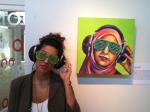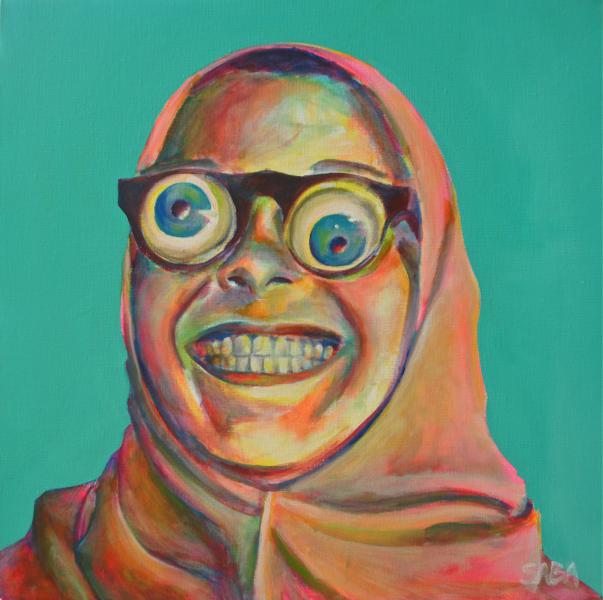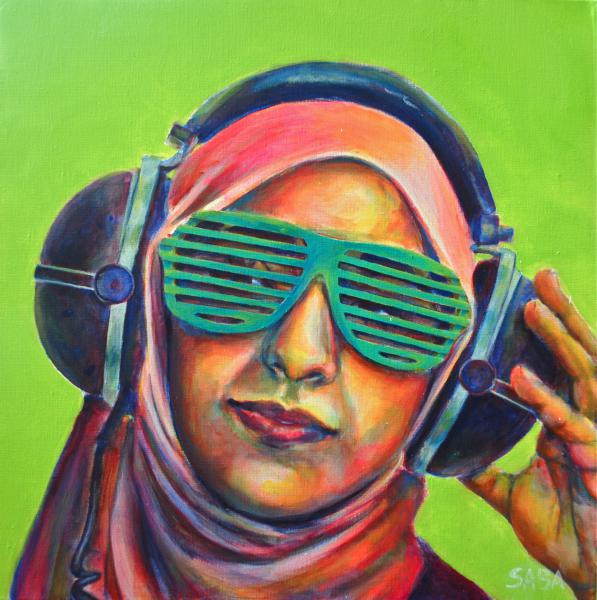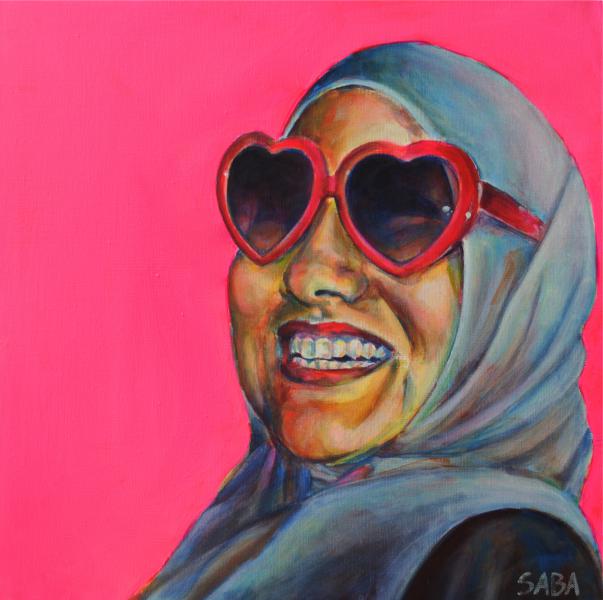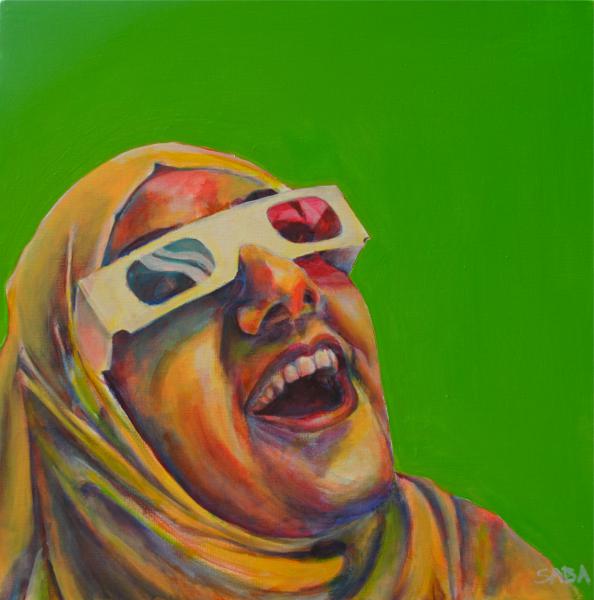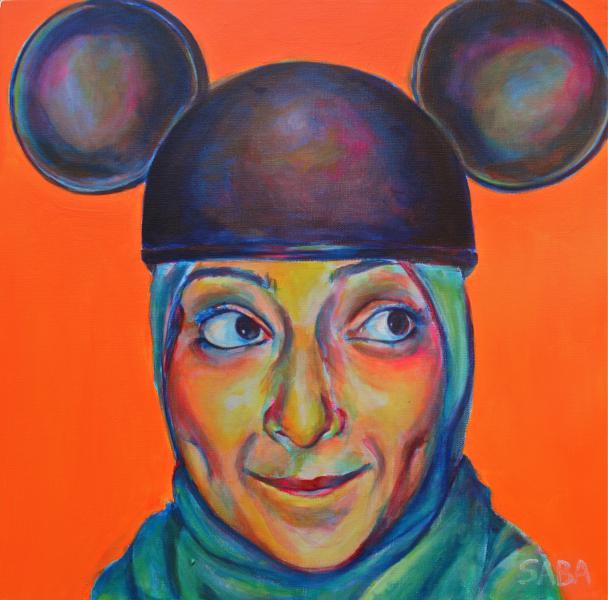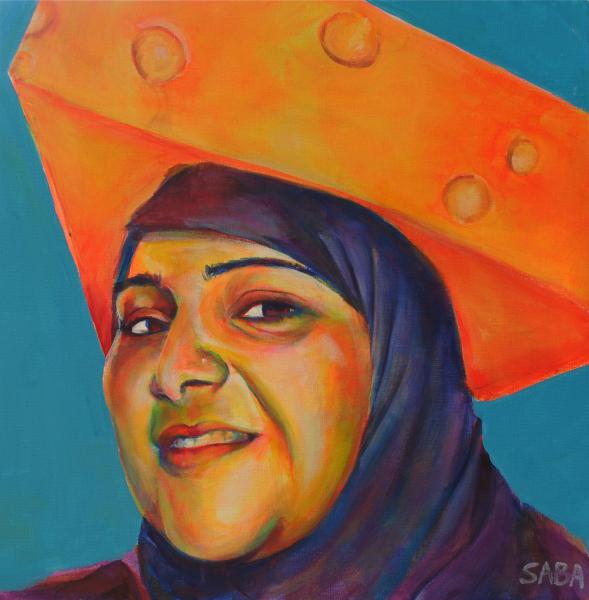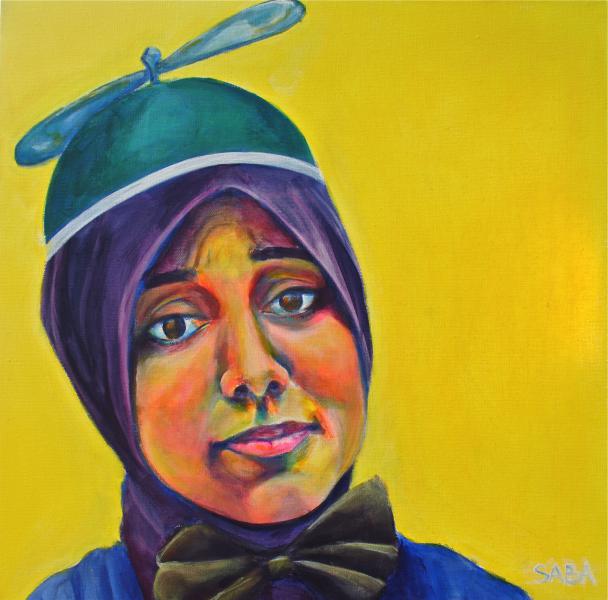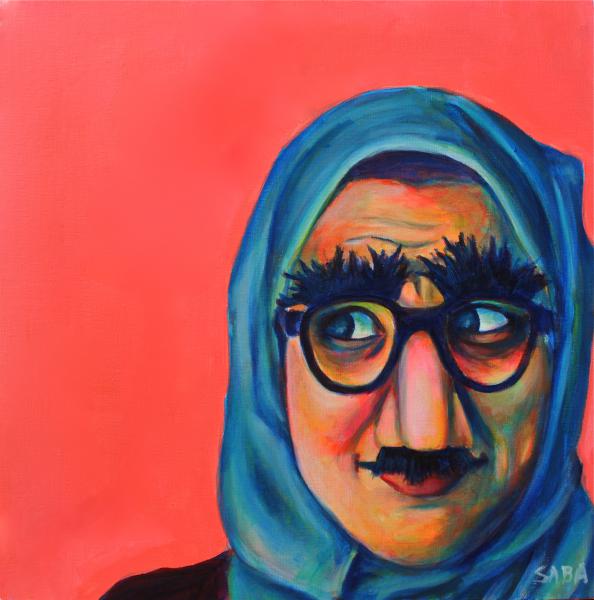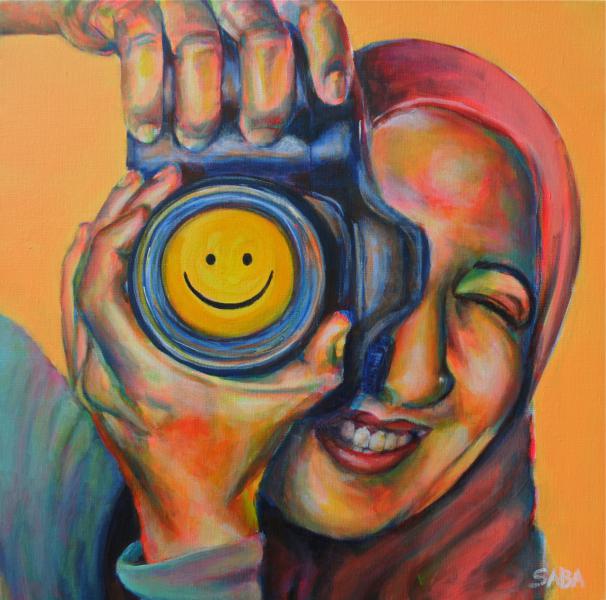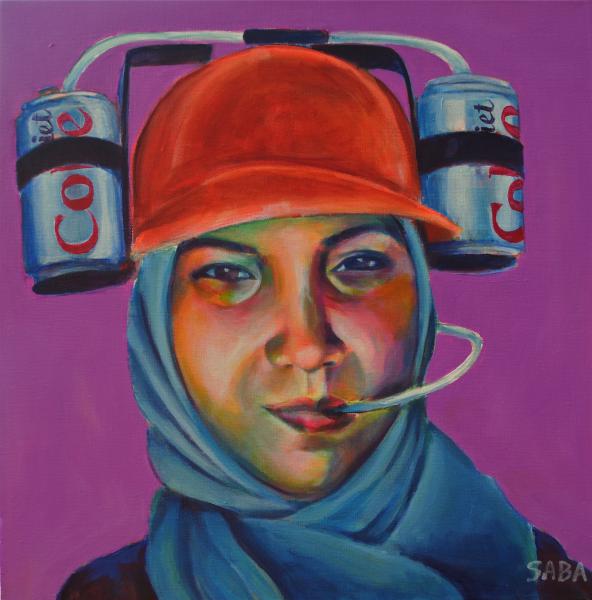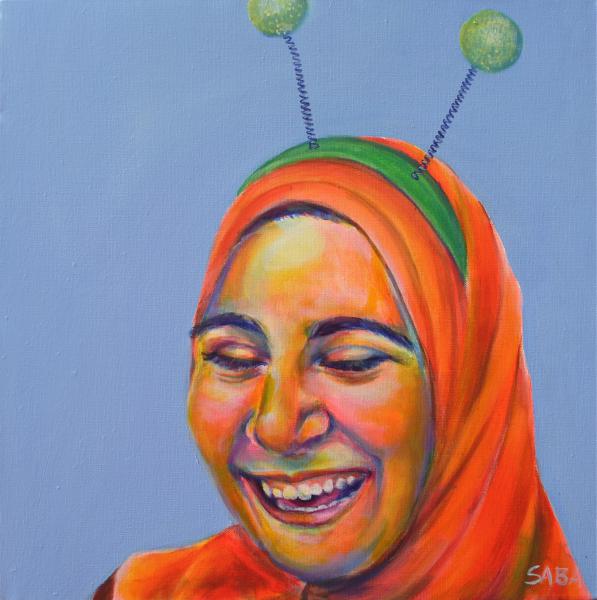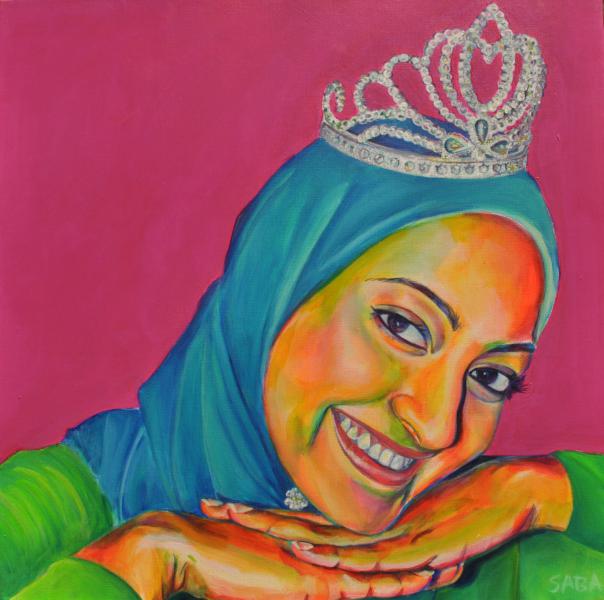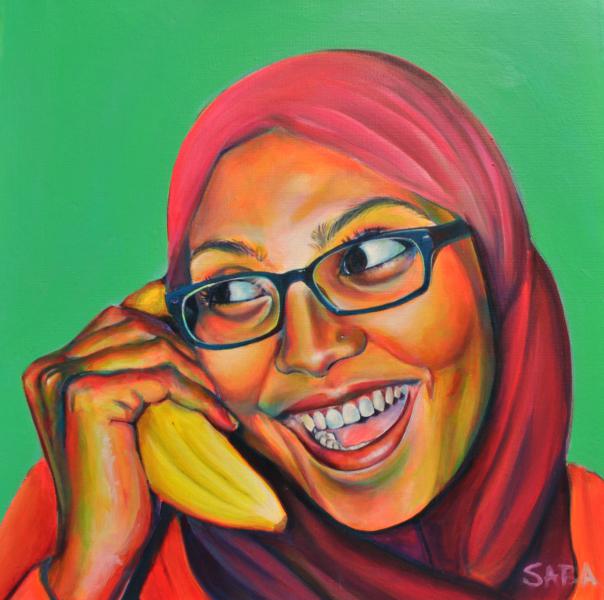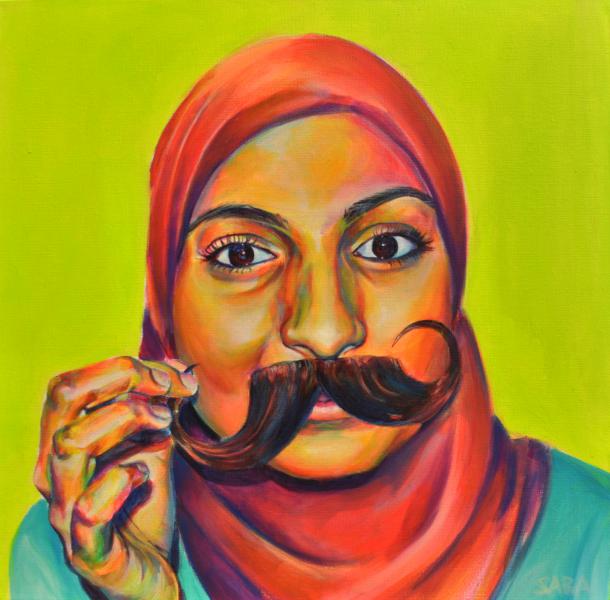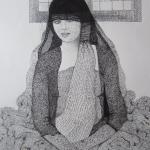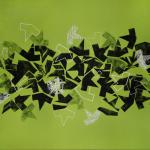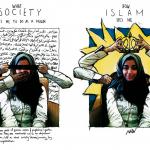What would it look like to depict Muslim women differently from the stereotypical exotic “other,” and entirely homogenous group? Artist Saba Chaudhry Barnard shows us a different, brightly-colored, and comical side to Muslimas in her beautifully-rendered paintings.
Modern treatment of Muslim subject matter in art and media is closely tied to the political and religious controversy that seems to be pervasive in these “exotic” countries of the East. While much of the conflict is real, oftentimes, visual media and “Muslim art” do nothing to lessen the perception of all Muslims as exotic, “other,” and entirely homogenous. Truly, much art and writing relies on the juxtaposition of the traditional and the taboo within Islam - emphasizing that the East is in exact opposition to the West. This portrayal is a farce. There is a massive community of Muslims who live in these Western countries who are not antithetical to “the West.” This community is made up of individuals, each with their own unique mosaic of culture and experiences. Islam is not a tiny box. It is not one-dimensional, and neither are the people who identify as Muslim. That such a simplistic perception of these peoples has persisted into our world today is unacceptable. There is a place for everyone in this country, yet these people have continued to be not only homogenized, but vilified. I have created a series of fifteen portraits of Muslim women in acrylic paint. The women are rendered in bright colors, which, in itself, is a departure from how Muslim women are often portrayed. I chose women because I believe that they are often the most clear representatives of the Muslim world, and the most misunderstood. This series focuses on aspects of these women that need to be explored - their humor, their joy, and their kindness. Each woman is identified as Muslim by her headscarf. This visual symbol is truly the only suggestion of her religion, because my perspective here is humanist. In addition, eleven of the paintings are presented with props to further support the theme of humor, or to identify the subjects as American, as well as Muslim. While there is a clear theme unifying these paintings, the individuality of each woman is highlighted in her unedited written statement. She tells you about herself, in her own words. The fifteenth portrait is a bit of a departure from the rest of the group. The subject faces the viewer directly, with an assertive gaze. We know nothing of her but her name. This portrait is especially important, because it indicates that the story is not over. This joyful portrayal of Muslim women is only one aspect amongst the kaleidoscope of qualities that these women possess. She is the blank slate. She is asking the viewer, “So what do you think of me, now?” She anchors the series, and asks the viewers to look back upon themselves. What do we know of her, if she does not tell us? Even in this age of instant information, we have a tendency to see a woman wearing a hijab, and imagine a patriarch forcing that veil upon her. We have an obsession with that piece of cloth and all that we think it represents. The assumption is that these women are being oppressed, that they are imprisoned within layers of cloth. This closed-minded perspective imprisons far too many. Those who fall prey to this misconception are preventing themselves from seeing how dynamic these women truly are, from seeing that they are American women who make their own choices. The hijab truly recedes into the background in these paintings, and the vibrant women within them shine through - in technicolor.
- Log in to post comments
